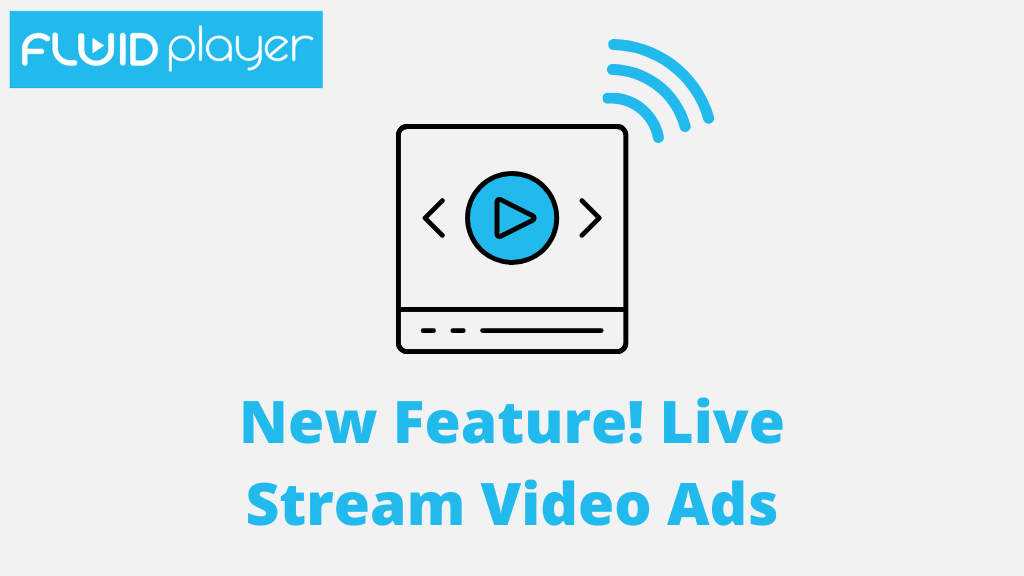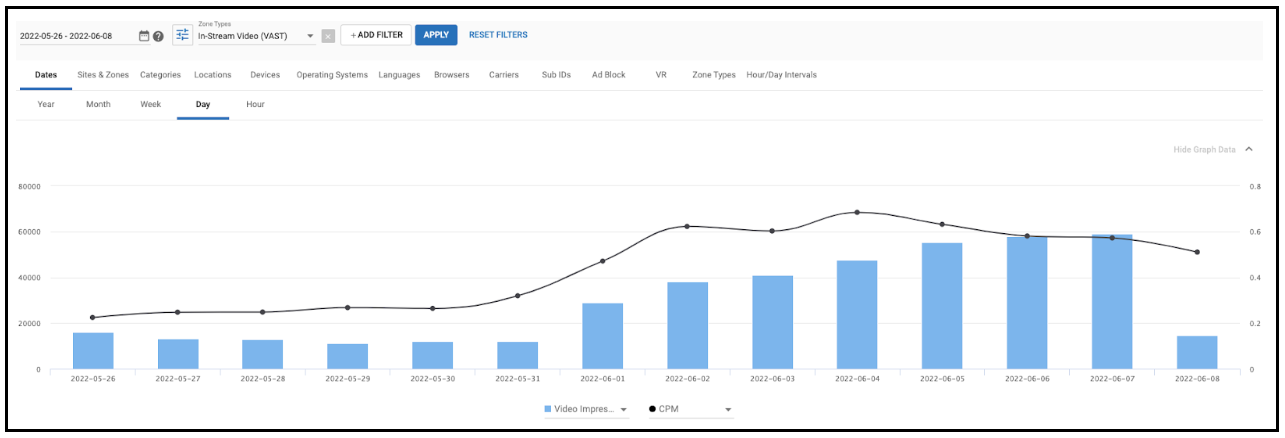Fluid player new update! Live stream video ads

Ever since YouTube LIVE and Twitch, live stream video ads have become extremely popular to promote brands. Brands get to connect in real-time with their audience, achieving immediate engagement. This format has been proven to achieve a higher and more positive response from target consumers, which makes it very attractive both for publishers and advertisers alike.
The free open source HTML 5 video player Fluid Player has been serving streaming files as main videos since 2020. However, it was not possible to serve them through in-stream video ads. Now, with the 2022 update, publishers can gain access to this new inventory of campaigns.
Video streaming files with Fluid Player
Since 2020’s update, streaming files (MPEG-DASH and HLS streaming) have been able to play as main videos within Fluid Player, with the streaming file needing to be specified as the “source” in the code:
<script src="https://cdn.fluidplayer.com/v3/current/fluidplayer.min.js"></script>
<video id='my-video' controls style="width: 640px; height: 360px;">
<source src='mystream.m3u8' title='720p' type='application/x-mpegURL'>
</video>
<video id='my-video' controls style="width: 640px; height: 360px;">
<source src='mystream.m3u8' title='720p' type='application/x-mpegURL'>
</video>
<script type="text/javascript">
var player = fluidPlayer(
'my-video',
{
layoutControls: {
},
vastOptions: {
}
}
);
</script>
Although publishers could display streaming videos, video ads were still limited to mp4 files only. In this latest update, Fluid Player supports 2 streaming protocols, using the streaming files formats .m3u8 and MPD.
Dynamic Adaptive Streaming over HTTP (DASH)
Also known as MPEG-DASH, this streaming protocol is a media presentation description (MPD) file containing segmented information. These segments of information contain the times, URL, resolution, bit rates etc, which informs the player what file quality to showcase, depending on bandwidth availability. The supported file format for this protocol is MPD, played through the JavaScript library Dash.js.
HTTP Live Streaming (also known as HLS)
HLS is an HTTP-based media streaming communications protocol used by Apple on QuickTime, Safari, OS X, and iOS software. To play HLS in browsers, Fluid Player uses hls.js, which is a JavaScript library. The LIVE video will then show within Fluid Player in .m3u8 format. Similarly to DASH, this protocol breaks the content into chunks and serves it one segment at a time.
The new update: Live streaming Video Ads
Fluid Player is open source and following up on user feedback, developers have created a new Fluid Player update that now allows it to run video streaming ads in ads with the new protocols. To use the new feature, publishers only need to make sure that they are using the latest Fluid Player version (3.2.1), you can download the latest version here. Once updated there is no need to adjust any code on your site because the streaming file is set up in the advertiser’s VAST Tag:
<AdSystem version="1">adserver.com</AdSystem>
<Creatives>
<Creative sequence="1" id="1">
<Linear skipoffset="00:00:05">
<Duration>00:02:00</Duration>
<MediaFiles>
<MediaFile id="1" delivery="streaming" type="application/vnd.apple.mpegurl" width="1280" height="720">
<![CDATA[ https://www.advertising.com/streaming_ad.m3u8]]>
</MediaFile>
What are the benefits of showing streaming files as video ads?
Benefits for Advertisers:
- Eye-catching: Streaming ads help gain higher audience attention, as they are more interactive and engaging.
- Higher Conversions: Live streaming ads offer a better chance for conversion and monetization because they are great to promote services based on social interaction, for example: influencer videos, live product tutorials, live content, playing online games live
- Real-Time Experience: Live streaming ads offer a real-time experience to the user, allowing them to connect with the content, through a one-time experience.
Benefits for Publishers:
- Higher eCPMs: Streaming formats are more resource-intensive than regular videos – heavier, and consume more bandwidth. Because of that, streaming ads are priced higher than regular video ads. However, because they get much more engagement from viewers, advertisers are happy to pay more to showcase them, providing higher eCPMs for publishers.
- Great User Experience: Because streaming formats don’t need to be edited, the advertiser saves time curating content for their ads. That allows a faster rotation of the content displayed on the ad zones, keeping the content fresh and interesting, which is great for user experience because visitors will not get annoyed by repeated ads.
- Extra Content: Because streaming video ads are live entertainment with social interaction they bring extra value content to your users. For example if you are a site that reviews online games, streaming video ads with live game player feeds or gaming tips make the advertiser’s content very appealing to your end users.
Why I changed to Fluid Player: a Publisher Case Study
A Publisher who was monetizing video ads with the Video.JS Player decided to switch to Fluid Player and implement the new Video Streaming in Ad Zones feature, here is a mini interview with him:
Q: Why did you change from Video.JS to Fluid Player?
A: I started to notice that I was getting many errors in the player (which was probably caused by the streaming campaigns), so I decided to test out Fluid Player instead.
Q: How easy was it to implement the change?
A: The implementation was very easy, I just installed the latest version of Fluid Player
Q: What results did you see from changing from Video.JS to Fluid Player for the new video ad streaming feature?
A: It was pretty astounding actually, I got increases on all metrics for the video ad zone:
- Revenue +740%
- eCPM +131%
- eCPC +111%
- eCPV +162%
- Impressions +262%
- Views +220%
- Clicks +296%
- CTR +9.3%
Here are the Publisher’s stats after implementing Fluid Player:

Q: What do you like about Fluid Player?
A: It’s light, it’s faster, I have better results, and of course it’s free.
Want to try Fluid Player? Learn how to set it up here!